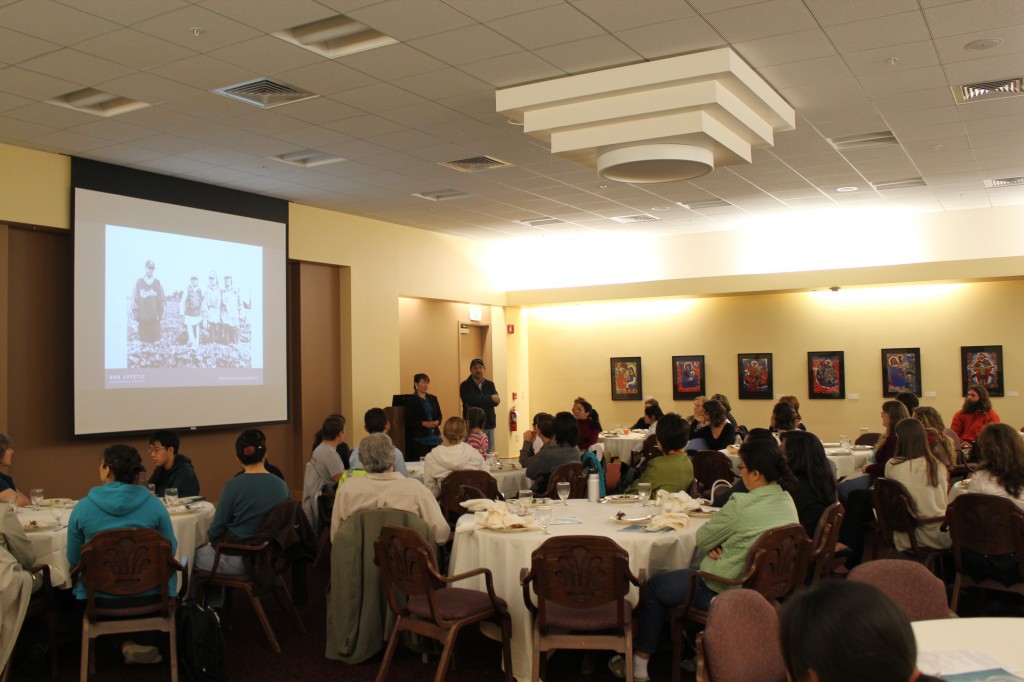Irma Mendoza’s Story: The Difference Between Conventional and Organic
- by Vera Chang
The final event of last spring’s Your Food Chain series at Santa Clara University, which was co-hosted by Bon Appétit and the Food & Agribusiness Institute, ended with the theme of strawberries. Strawberries: one of our country’s most beloved fruits, California’s most profitable fruits, and one of the most labor intensive crops to grow. Since strawberries perish and bruise easily – no matter what new machinery is developed – human labor will essentially always be required for harvesting.
I had the honor of speaking alongside strawberry farmer Irma Mendoza, recent graduate of the Agriculture and Land-Based Training Association (ALBA). While you may have already heard my perspective on farmworker issues and experiences working in strawberry fields from previous posts, I want to share Irma’s story with you today.
Irma grew up in Michoacán, Mexico, on her family’s farm, working alongside her father to grow strawberries, tomatoes, and celery. Everything was, of course, grown organically. Their family didn’t have many resources, and organic was the straightforward choice.
When Irma was 17, she left Mexico for the United States and naturally sought out a farm job. She started out harvesting strawberries, but her experiences growing in California were different from growing up in Mexico. The biggest difference being that the berries were grown with extremely toxic pesticides and chemical fertilizers. And as a farmworker picking in the fields that were being sprayed, and sometimes picking while they were being sprayed, Irma would get nauseated and sick. Pesticide illness was a major problem for the pregnant women working out in the fields. (The Pesticide Action Network offers many resources to learn more about pesticides’ effects on human health.)
Worst, the strawberries she was helping grow and pick didn’t taste good. When she went home, Irma would try vainly to wash off all the white pesticide residue left on the fruit before feeding them to her family.
After 10 years working as a strawberry picker, Irma left and went to work in a vegetable warehouse in Santa Barbara. But she found that working indoors also wasn’t great for her health; while she was no longer in the fields being sprayed, she still handled chemical residues on the vegetables she packed. The smell of ammonia was intense. Irma began to have problems with her eyesight. She speculates that her many of her relatives who died from cancer got it from working in the fields and also eating conventionally raised foods.
One day, Irma received a brochure in the mail about ALBA. It explained its program to provide educational and business opportunities for farmworkers and aspiring farmers to grow and sell crops. Irma was eager to leave conventional agriculture for good, though she hadn’t lost her passion for organic. She thought about how nice it would be really to go back to the days when she and her family would farm more in tune with nature and be able to feed everyone healthy, fresh foods. Again, Irma packed up and headed north, this time taking her family with her. She and her husband signed up for the six-month course.
Today, Irma and her family grow two acres of strawberries and vegetables, including fava beans, cauliflower, broccoli, and rainbow carrots. When Irma’s relatives said they’ve “never eaten carrots so sweet,” she replied: “This is what organic tastes like.”
Irma’s future plans? To farm with her family on her own land, continue growing organic, sell at the farmers market, and feed her grandchildren.
Thanks for sharing your story, Irma and for providing the wonderfully, delicious, and fair strawberries for the event!


